Chrysler 2008 Annual Report Download - page 35
Download and view the complete annual report
Please find page 35 of the 2008 Chrysler annual report below. You can navigate through the pages in the report by either clicking on the pages listed below, or by using the keyword search tool below to find specific information within the annual report.-
 1
1 -
 2
2 -
 3
3 -
 4
4 -
 5
5 -
 6
6 -
 7
7 -
 8
8 -
 9
9 -
 10
10 -
 11
11 -
 12
12 -
 13
13 -
 14
14 -
 15
15 -
 16
16 -
 17
17 -
 18
18 -
 19
19 -
 20
20 -
 21
21 -
 22
22 -
 23
23 -
 24
24 -
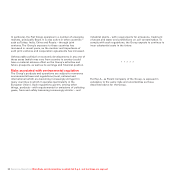 25
25 -
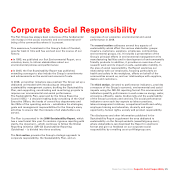 26
26 -
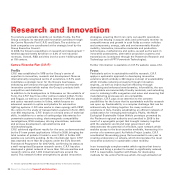 27
27 -
 28
28 -
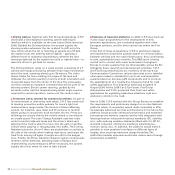 29
29 -
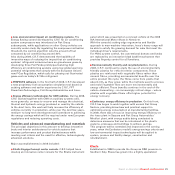 30
30 -
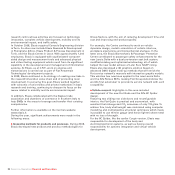 31
31 -
 32
32 -
 33
33 -
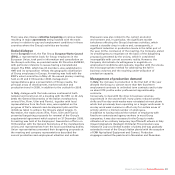 34
34 -
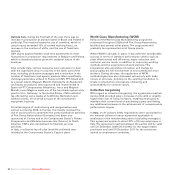 35
35 -
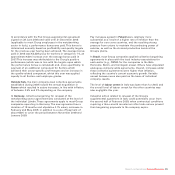 36
36 -
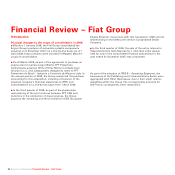 37
37 -
 38
38 -
 39
39 -
 40
40 -
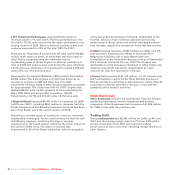 41
41 -
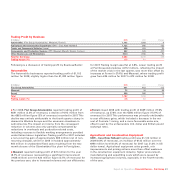 42
42 -
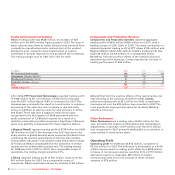 43
43 -
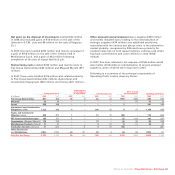 44
44 -
 45
45 -
 46
46 -
 47
47 -
 48
48 -
 49
49 -
 50
50 -
 51
51 -
 52
52 -
 53
53 -
 54
54 -
 55
55 -
 56
56 -
 57
57 -
 58
58 -
 59
59 -
 60
60 -
 61
61 -
 62
62 -
 63
63 -
 64
64 -
 65
65 -
 66
66 -
 67
67 -
 68
68 -
 69
69 -
 70
70 -
 71
71 -
 72
72 -
 73
73 -
 74
74 -
 75
75 -
 76
76 -
 77
77 -
 78
78 -
 79
79 -
 80
80 -
 81
81 -
 82
82 -
 83
83 -
 84
84 -
 85
85 -
 86
86 -
 87
87 -
 88
88 -
 89
89 -
 90
90 -
 91
91 -
 92
92 -
 93
93 -
 94
94 -
 95
95 -
 96
96 -
 97
97 -
 98
98 -
 99
99 -
 100
100 -
 101
101 -
 102
102 -
 103
103 -
 104
104 -
 105
105 -
 106
106 -
 107
107 -
 108
108 -
 109
109 -
 110
110 -
 111
111 -
 112
112 -
 113
113 -
 114
114 -
 115
115 -
 116
116 -
 117
117 -
 118
118 -
 119
119 -
 120
120 -
 121
121 -
 122
122 -
 123
123 -
 124
124 -
 125
125 -
 126
126 -
 127
127 -
 128
128 -
 129
129 -
 130
130 -
 131
131 -
 132
132 -
 133
133 -
 134
134 -
 135
135 -
 136
136 -
 137
137 -
 138
138 -
 139
139 -
 140
140 -
 141
141 -
 142
142 -
 143
143 -
 144
144 -
 145
145 -
 146
146 -
 147
147 -
 148
148 -
 149
149 -
 150
150 -
 151
151 -
 152
152 -
 153
153 -
 154
154 -
 155
155 -
 156
156 -
 157
157 -
 158
158 -
 159
159 -
 160
160 -
 161
161 -
 162
162 -
 163
163 -
 164
164 -
 165
165 -
 166
166 -
 167
167 -
 168
168 -
 169
169 -
 170
170 -
 171
171 -
 172
172 -
 173
173 -
 174
174 -
 175
175 -
 176
176 -
 177
177 -
 178
178 -
 179
179 -
 180
180 -
 181
181 -
 182
182 -
 183
183 -
 184
184 -
 185
185 -
 186
186 -
 187
187 -
 188
188 -
 189
189 -
 190
190 -
 191
191 -
 192
192 -
 193
193 -
 194
194 -
 195
195 -
 196
196 -
 197
197 -
 198
198 -
 199
199 -
 200
200 -
 201
201 -
 202
202 -
 203
203 -
 204
204 -
 205
205 -
 206
206 -
 207
207 -
 208
208 -
 209
209 -
 210
210 -
 211
211 -
 212
212 -
 213
213 -
 214
214 -
 215
215 -
 216
216 -
 217
217 -
 218
218 -
 219
219 -
 220
220 -
 221
221 -
 222
222 -
 223
223 -
 224
224 -
 225
225 -
 226
226 -
 227
227 -
 228
228 -
 229
229 -
 230
230 -
 231
231 -
 232
232 -
 233
233 -
 234
234 -
 235
235 -
 236
236 -
 237
237 -
 238
238 -
 239
239 -
 240
240 -
 241
241 -
 242
242 -
 243
243 -
 244
244 -
 245
245 -
 246
246 -
 247
247 -
 248
248 -
 249
249 -
 250
250 -
 251
251 -
 252
252 -
 253
253 -
 254
254 -
 255
255 -
 256
256 -
 257
257 -
 258
258 -
 259
259 -
 260
260 -
 261
261 -
 262
262 -
 263
263 -
 264
264 -
 265
265 -
 266
266 -
 267
267 -
 268
268 -
 269
269 -
 270
270 -
 271
271 -
 272
272 -
 273
273 -
 274
274 -
 275
275 -
 276
276 -
 277
277 -
 278
278 -
 279
279 -
 280
280 -
 281
281 -
 282
282 -
 283
283 -
 284
284 -
 285
285 -
 286
286 -
 287
287 -
 288
288 -
 289
289 -
 290
290 -
 291
291 -
 292
292 -
 293
293 -
 294
294 -
 295
295 -
 296
296 -
 297
297 -
 298
298 -
 299
299 -
 300
300 -
 301
301 -
 302
302 -
 303
303 -
 304
304 -
 305
305 -
 306
306 -
 307
307 -
 308
308 -
 309
309 -
 310
310 -
 311
311 -
 312
312 -
 313
313 -
 314
314 -
 315
315 -
 316
316 -
 317
317 -
 318
318 -
 319
319 -
 320
320 -
 321
321 -
 322
322 -
 323
323 -
 324
324 -
 325
325 -
 326
326 -
 327
327 -
 328
328 -
 329
329 -
 330
330 -
 331
331 -
 332
332 -
 333
333 -
 334
334 -
 335
335 -
 336
336 -
 337
337 -
 338
338 -
 339
339 -
 340
340 -
 341
341 -
 342
342 -
 343
343 -
 344
344 -
 345
345 -
 346
346 -
 347
347 -
 348
348 -
 349
349 -
 350
350 -
 351
351 -
 352
352 -
 353
353 -
 354
354 -
 355
355 -
 356
356
 |
 |
Report on Operations Human Resources34
Outside Italy, during the first half of the year there was an
increase in production at plants located in Brazil and Poland in
particular. This involved extensive use of overtime, which in
certain cases exceeded 10% of normal working hours, an
increase in the number of shifts, and the use of fixed-term
workers.
CNH plants applied flexible work-time agreements to meet
fluctuations in production requirements in Belgium and Poland,
which is standard practice given the seasonal nature of the
business.
Also outside Italy, various measures were necessary to deal
with the significant drop in volumes in the latter part of the
year, including production stoppages and a reduction in the
number of fixed-term and agency workers. More specifically,
chômage partiel
was utilised in France at CNH, FPT, Teksid and,
to a lesser extent, Magneti Marelli;
Expediente de Regulacion
de Empleo
procedures were approved and implemented in
Spain at FPT Componentes Mecanicos, Iveco and Magneti
Marelli; Iveco Magirus made use of the hour-bank system at its
plant in Ulm, Germany; in the United States, CNH instituted
lay-offs lasting some weeks at its Wichita, Burlington and
Calhoun plants, all of which are part of the construction
equipment business.
A limited degree of restructuring and reorganisation was
carried out during 2008. In Europe, this mainly involved the
use of social plans to streamline the parts distribution activities
of Fiat Group Automobiles (Germany) and down-size
operations at Comau and at the Components Sector’s Plastic
Components and Modules business line (France). In North
America, CNH’s also rationalised its financial services
activities.
In Italy, a collective lay-off plan (
mobilità ordinaria
) was
initiated at the Components Sector’s Cassino plant.
World Class Manufacturing (WCM)
Rollout of the World Class Manufacturing programme
continued throughout 2008 at all Fiat Group Automobiles
facilities and several other plants. The programme will
gradually be implemented at all Group plants.
Where WCM is already in place, it has achieved considerable
success in terms of standard performance criteria such as
plant effectiveness and efficiency, waste reduction and
customer service levels, in addition to improving working
methods and the ergonomics of work stations. This
programme also generates innovation and change by
encouraging the full involvement of and contribution from
workers. During the year, the application of WCM
methodologies was also discussed extensively with trade
unions at all levels, building on the existing foundation to
create a constructive atmosphere of sharing and
accountability for common goals.
Collective bargaining
With regard to collective bargaining, the agreements reached
during 2008 provided salary increases in line with or slightly
higher than cost of living increases, enabling employees to
maintain their current level of purchasing power and linking
any additional increases to the achievement of company-wide
performance targets.
In Italy, on 20 January 2008, negotiations were concluded for
the national collective labour agreement applicable to
employees in the metalworking sector (excluding managers).
This agreement applies to about 97% of Group employees in
Italy. The agreement reached between the parties will be valid
until 31 December 2009 (30 months) for the wage-related
provisions and until 31 December 2011 for the provisions
related to employment conditions.
